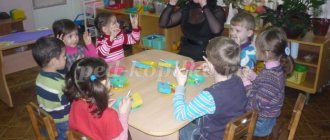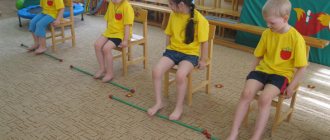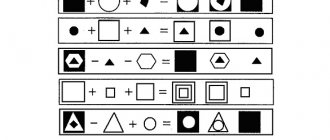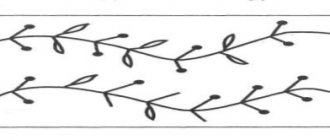Gaming technologies as a type of pedagogical technology
Bibliographic description:
Mikhailenko, T. M. Game technologies as a type of pedagogical technologies / T. M. Mikhailenko.
— Text: immediate // Pedagogy: traditions and innovations: materials of the I International. scientific conf. (Chelyabinsk, October 2011). - T. 1. - Chelyabinsk: Two Komsomol members, 2011. - P. 140-146. — URL: https://moluch.ru/conf/ped/archive/19/1084/ (date of access: 10.10.2020). The origin of the idea of technology of the pedagogical process is associated primarily with the introduction of achievements of scientific and technological progress into various areas of theoretical and practical activity.
A historiographic analysis of psychological and pedagogical literature allows us to state that in recent years, scientists have increased their attention to developing the essence of the phenomenon of “educational technology” and identifying its fundamental characteristics and types. The works of leading domestic teachers are devoted to the study of this problem: V.P. Bespalko, E.V. Bondarevskaya, M.P. Gorchakova – Sibirskaya, M.V. Clarina, M.M. Levina, V.M. Monakhova, O.P. Okolelova, S.Ya. Savelyeva, V.V. Serikova, I.B. Sennovsky, N.F. Talyzina, P.I. Tretyakov and others. Much in the subsequent analysis and understanding of the essence of the term depends on how this concept is interpreted. Therefore, let us turn, first of all, to the terminological consideration of the category “pedagogical technology”.
The word "technology" comes from the Greek words: "techne" - art, skill, skill and "logos" - science, law. Literally, “technology” is the science of craftsmanship [2].
The most common concept of “technology” relates to the production process and is defined as “a set of methods of processing, manufacturing, changing the state of properties, forms of raw materials, materials or semi-finished products carried out in the process of production.” Technology embodies methods, techniques, mode of operation, sequence of operations and procedures; it is closely related to the means, equipment, tools, and materials used. The set of technological operations forms a technological process. Modern science uses the term “technology” in such combinations as “teaching technology of the educational process, treatment, management” [2].
This interpretation of the term allows us to draw the following conclusions:
- the term came to pedagogy from technical sciences;
- technology is a way of transforming something;
- technology provides for consistency in actions.
As we can see, the interpretation of the phenomenon “technology” is general, applied to many branches of knowledge: medicine, technology, including pedagogy. Pedagogical technology is understood as “a system of interrelated techniques, forms and methods of organizing the educational process, united by a single conceptual framework, goals and objectives of education, creating a given set of conditions for the training, education and development of students” [2].
The dictionary of concepts and terms on education and pedagogy defines the criteria for pedagogical technology, including the main characteristics and indicators by which pedagogical activity is assessed. These are effectiveness (achieving the set goal), reproducibility (the ability to use it under changed conditions), translatability (the ability to transfer experience of its use in the form of knowledge).
The key element of any technology is a detailed determination of the final result and control of its achievement. A process only receives the status of technology when it is predicted in advance, the final properties of the product and the means for its production are determined, and the conditions for carrying out the process are formed.
The initial ideas in the dissertation research are ideas about the essential characteristics of pedagogical technologies set out in the works of O.A. Abdullina, V.P. Bespalko, E.V. Bondarevskaya, N.V. Bordovskoy, N.P. Gorchakova-Sibirskaya, E.A. Kryukova, V.V. Lapteva, N.M. Levina, E.V. Lyubicheva, V.M. Monakhova, P.E. Reshetnikova, G.K. Selevko, V.V. Serikova, A.P. Tryapitsyna, N.F. Talyzina, P.I. Tretyakova, N.O. Yakovleva, etc. In the content of the term “pedagogical technology”, some authors include the concept of a project of the educational process, others – methods, means, operations, methods, techniques, conditions, forms of organization of the educational process, and others – a model of joint pedagogical activity.
A classification of educational technologies has been undertaken in the scientific literature. There are several approaches. Thus, one of the approaches to classifying educational technologies was taken by N.V. Bordovskaya and A.A. Rean. Scientists identify five types of educational technologies: task-based, gaming, computer, dialogue, and training technologies.
Of greatest interest in our research are gaming technologies. In this classification, gaming technologies are associated with a gaming form of interaction between a teacher and students through the implementation of a certain plot (games, fairy tales, performances, business communication). At the same time, educational tasks are included in the content of the game. Entertaining, theatrical, business, role-playing, and computer games are used in the educational process.
Gaming technologies are an integral part of pedagogical technologies. The problem of using gaming technologies in the educational process in pedagogical theory and practice is not new. L. S. Vygotsky, A. N. were engaged in the development of the theory of the game, its methodological foundations, clarification of its social nature, and its significance for the development of the student in Russian pedagogy. Leontyev, D.B. Elkonin et al.
Currently, gaming technologies are of great interest to teachers. More than once there has been an attempt to scientifically classify the game and define it in one comprehensive concept, but to date only the connections between the game and human culture have been scientifically determined, the significance that the game has on the development of the personality of a child and an adult has been clarified, and the biological nature of the game has been empirically identified. games and its conditioning by psychological and social factors.
Meanwhile, gaming technologies remain “innovative” in the Russian education system. It's funny that some innovators, having proclaimed the game as a panacea, but ignoring the experience of domestic scientists, go to study gaming technologies abroad, seeing in it an unquestionable authority. Others do not accept the game at all, do not consider it a special or independent direction in pedagogy, or agree with its forms that have nothing to do with the game.
Undoubtedly, both domestic and world pedagogical practice has accumulated baggage that can be used. This is, first of all, gaming technology. They have found wide application in our practice. Gaming technologies have enormous potential from the point of view of a priority educational task: the formation of a child’s subjective position in relation to his own activities, communication and himself.
Play, as one of the oldest pedagogical means of teaching and upbringing, is currently experiencing a period of unique flourishing. What is causing the increase in interest in the game at the present time? On the one hand, it is caused by the development of pedagogical theory and practice, the spread of problem-based learning, on the other hand, it is determined by the social and economic needs of the formation of a versatile active personality.
An analysis of philosophical, cultural, psychological and pedagogical literature shows that in modern science there is no holistic theory of the game; there are a number of its concepts in different branches of science.
In philosophy and cultural studies, the game is considered as a way of human existence, a means of understanding the world around us, the axiological foundations of the game and the ethnocultural value of the gaming phenomenon are studied.
In pedagogical science, the phenomenon of play is considered as a way of organizing education and training, as a component of pedagogical culture; forms and methods of optimizing the gaming activity of the modern generation are studied.
In psychology, play is considered as a means of activating mental processes, a means of diagnosis, correction and adaptation to life; social emotions accompanying the gaming phenomenon are studied.
F. Schiller was one of the first to pay attention to the phenomenon of the game. He considered the game as one of the effective factors in shaping a person’s worldview. Schiller believed that a person in the game and through the game creates himself and the world in which he lives, that one can become a person only by playing. G. Spencer paid special attention to the exercise function of the game. The Dutch cultural historian J. Huizinga drew attention to the importance of the game as a source of culture. In his opinion, human culture arises and unfolds in and as a game [1].
The greatest contribution to the scientific understanding and interpretation of the phenomenon of play was made by such Western philosophers and psychologists as E. Bern, R. Winkler, G-H. Gadamer, J.-P. Sartre, Z. Freud. In domestic science, the theory of play in the aspect of elucidating its social nature, internal structure and significance for the mental development of a child was developed by I.E. Berland, L.S. Vygodsky, N.Ya. Mikhailenko, A.N. Leontyev, D.B. Elkonin et al. The pedagogy of play, the place of play in the pedagogical process, the structure of play activity and the management of play were developed by N.A. Anikeeva, N.N. Bogomolova, V.D. Ponomarev, S.A. Smirnov, S.A. Shmakov and others.
D.B. Elkonin, analyzing the phenomenon of play, comes to the conclusion that play is an activity in which social relationships between people are recreated outside the conditions of directly utilitarian activity. According to D.B. Elkonin, the main structural units of the game can be considered:
- the roles that the players take on;
- the plot, the relationships that are conveyed in the game and copied from the lives of adults, are reproduced by the players;
- the rules of the game to which the players obey.
If we consider the game as an activity, then its structure will organically include goal setting, planning, goal implementation, as well as analysis of the results in which the individual realizes himself fully as a subject.
The structure of the game as a process includes the roles taken on by the players; game actions as a means of realizing these roles; replacing real objects with game ones; real relationships between the players; plot (content) - an area of reality that is conventionally reproduced in the game.
S.A. Shmakov identifies the following features inherent in most games:
- free developmental activity, undertaken at the request of the person himself, for the sake of pleasure from the process of activity itself, and not just from the result (“procedural pleasure”);
- creative, largely improvisational, active nature of this activity (“field of creativity”);
— emotional elation of activity, rivalry, competitiveness, competition (“emotional stress”);
— the presence of direct or indirect rules that reflect the content of the game, the logical and temporal sequence of its development [1].
Many researchers of the game (Yu.M. Lotman, S.L. Rubinshtein, D.E. Elkonin, etc.) highlight its main property as ambivalence, i.e. the game presupposes the implementation of both real and conditional behavior, but it is noted that only the conditions in which the “person playing” mentally puts himself are imagined; the feelings that he experiences in these imaginary conditions are genuine feelings. The conventionality of gaming relationships mobilizes and activates the capabilities of the individual, contributes to the realization of a person’s creative potential, encourages him to look for new, yet unmastered ways to solve game (life) problems, observing the rules and norms of behavior and relationships prescribed by the game role [1].
According to D.N. Uznadze game is a form of psychogenic behavior, i.e. intrinsic, immanent to the individual. L.S. imagined the game as a space for a child’s “internal socialization” and a means of assimilating social attitudes. Vygotsky [8].
This concept was described quite interestingly by A.N. Leontyev, namely as personal freedom in the imagination, “illusory realization of unrealizable interests.” In our opinion, the most complete definition is presented by V.S. Kukushina. He believes that play is a type of activity in situations aimed at recreating and assimilating social experience, in which self-control of behavior is formed and improved.
The value of gaming technology cannot be exhausted and assessed by entertainment and recreational opportunities. This is the essence of its phenomenon: being entertainment and relaxation, it can develop into learning, creativity, therapy, a model of the type of human relationships and manifestations in work and education. In a modern school that relies on the activation and intensification of the educational process, gaming technology is used in the following cases:
- as independent technologies for mastering a concept, topic, or even a section of an academic subject;
- as elements (sometimes very significant) of a broader technology;
- as a technology for a lesson or its fragment (introduction, explanation, reinforcement, exercise, control);
- as a technology for extracurricular activities.
The concept of “game technologies” includes a fairly broad group of methods for organizing the pedagogical process in the form of various pedagogical games. Unlike games in general, a pedagogical game has an essential feature - a clearly defined learning goal and a corresponding pedagogical result, which can be justified, identified explicitly and characterized by an educational-cognitive orientation. The game form of classes is created in lessons with the help of game techniques and situations that act as a means of inducing and stimulating learning activities. Students' activities should be based on the creative use of games and play activities in the educational process with younger students, which best meets the age needs of this category of students.
The implementation of game techniques and situations during the lesson form of classes occurs in the following main areas:
- a didactic goal is set for students in the form of a game task;
- educational activities are subject to the rules of the game;
- educational material is used as its means, an element of competition is introduced into educational activities, which transforms the didactic task into a game one;
- successful completion of a didactic task is associated with the game result [6].
When using gaming technologies in lessons, the following conditions must be met:
1) compliance of the game with the educational goals of the lesson;
2) accessibility for students of a given age;
3) moderation in the use of games in the classroom.
We can distinguish the following types of lessons using gaming technologies:
1) role-playing games in class;
2) game organization of the educational process using game tasks (lesson - competition, lesson - competition, lesson - travel, lesson - KVN);
3) game-based organization of the educational process using tasks that are usually offered in a traditional lesson;
4) use of the game at a certain stage of the lesson (beginning, middle, end; acquaintance with new material, consolidation of knowledge, skills, repetition and systematization of what has been learned);
5) various types of extracurricular activities (KVN, excursions, evenings, Olympiads, etc.), which can be carried out between students of different classes of the same parallel.
Gaming technologies occupy an important place in the educational process, as they not only contribute to the development of cognitive interests and the activation of students’ activities, but also perform a number of other functions:
1) a game properly organized taking into account the specifics of the material trains memory, helps students develop speech skills;
2) the game stimulates the mental activity of students, develops attention and cognitive interest in the subject;
3) the game is one of the methods for overcoming the passivity of students.
The place and role of gaming technology in the educational process, the combination of game elements and learning largely depend on the teacher’s understanding of the functions of pedagogical games. The function of the game is its varied usefulness. Each type of game has its own usefulness. Let us highlight the most important functions of the game as a pedagogical phenomenon of culture.
Sociocultural purpose of the game.
Play is the strongest means of socialization of a child, which includes both socially controlled processes of their targeted influence on the formation of personality, the acquisition of knowledge, spiritual values and norms inherent in society or a peer group, and spontaneous processes that influence the formation of a person. The sociocultural purpose of the game can mean the synthesis of a person’s assimilation of the wealth of culture, the potential of education and the formation of him as an individual, allowing him to function as a full member of the team.
Function of interethnic communication.
I. Kant considered humanity itself to be sociable. Games are national and at the same time international, interethnic, universal. Games provide an opportunity to simulate different life situations, look for a way out of conflicts without resorting to aggressiveness, and teach a variety of emotions in the perception of everything that exists in life.
The function of human self-realization in the game.
This is one of the main functions of the game. For a person, play is important as a sphere of self-realization as an individual. It is in this regard that the process of the game itself is important to him, and not its result, competitiveness or achieving any goal. The game process is a space of self-realization. Human practice is constantly introduced into a game situation in order to reveal possible or even existing problems for a person and simulate their removal.
Communication game.
A game is a communicative activity, although according to purely game rules it is specific. It introduces the student to the real context of the most complex human relationships. Any gaming society is a collective that acts in relation to each player as an organization and a communicative principle that has many communicative connections. If a game is a form of communication between people, then without contacts of interaction, mutual understanding, and mutual concessions, there can be no game between them.
Diagnostic function of the game.
Diagnostics – the ability to recognize, the process of making a diagnosis. The game is predictive; it is more diagnostic than any other human activity, firstly, because the individual behaves in the game at the maximum of manifestations (intelligence, creativity); secondly, the game itself is a special “field of self-expression.”
Game therapy function of the game.
The game can and should be used to overcome various difficulties that a person has in behavior, in communicating with others, in learning. Assessing the therapeutic value of gaming techniques, D.B. Elkonin wrote that the effect of play therapy is determined by the practice of new social relationships that the child receives in role-playing play.
In-game correction function.
Psychological correction in the game occurs naturally if all students have mastered the rules and plot of the game, if each participant in the game knows well not only his role, but also the roles of his partners, if the process and goal of the game unite them. Corrective games can help students with deviant behavior, help them cope with experiences that interfere with their normal well-being and communication with peers in the group.
Entertainment function of the game.
Entertainment is an attraction to different things.
The entertainment function of the game is associated with the creation of a certain comfort, a favorable atmosphere, and spiritual joy as protective mechanisms, i.e. stabilization of the personality, realization of the levels of its aspirations. Fun in games is search. The game has magic that can provide food for fantasy, leading to entertainment [6]. Numerous literary sources contain various classifications of games. The principles of classification are varied. The difficulty of classifying games lies in the fact that they, like any cultural phenomenon, are seriously influenced by the historical process of any new formation, the ideology of different social groups.
Thus, the classification of games according to G.K. Selevko includes the following groups of games:
By area of activity:
physical, intellectual, labor, social and psychological.
According to the nature of the psychological process:
— teaching, training, controlling, generalizing;
- cognitive, educational, developmental;
- reproductive, productive, creative;
— communicative, diagnostic, career guidance, psychotechnical.
According to the gaming method:
subject, plot, role-playing, business, simulation and dramatization games.
By subject area:
— mathematical, physical, environmental;
- musical, theatrical, literary;
— labor, technical;
— physical education, sports, military-applied, tourism, folk;
- social science, management, economics.
By gaming environment:
- without objects / with objects;
— tabletop, indoor, outdoor, on-site;
— computer, television, TSO;
- technical, with means of transportation.
Depending on the duration, they are divided into:
- short games.
These include subject-based, role-playing and other games used to develop interest in educational activities and solve individual specific problems: mastering a specific rule, practicing a skill, and so on;
- game shells.
These are game forms of organizing educational activities that last longer. Most often they are limited to one lesson, but they can last a little longer. These include such a technique as creating a single game shell, that is, presenting a lesson in the form of a holistic study - a game.
— long educational games
. Games of this type are designed for different time periods and can last from several days or weeks to several years. They are focused on a distant ideal goal and are aimed at the formation of slowly forming mental and personal qualities of the student. The peculiarity of this group is seriousness and efficiency.
There are also games with ready-made “hard” rules; “free” games, the rules of which are established during the course of game actions; games that combine both the free play organization of activities and the rules accepted as the conditions of the game and arising during its course [8]. Games can be systematized according to content (military, sports, economic), according to the composition and number of players (singles, doubles, group, etc.)
According to the famous theorist and practitioner of gaming activity S.A. Shmakov, the best classification of games was made by E.I. Dobrinskaya and E.V. Sokolov. These authors, in particular, propose to distinguish games by what abilities they reveal and train in a person (physical, intellectual, competitive, creative). It is Dobrinskaya and Sokolov who highlight game-based teaching methods. E.V. Sokolov also suggests dividing games into “liberating” and “ecstatic”. In the first case, there is a tendency towards liberation from the environment, towards the creation of a special game world, in the second - merging with the environment, dissolving in it. The authors include cards, chess, carnivals, all sorts of tricks - all kinds of gaming activities in which the laws of nature are "ostentatiously" violated - to the first row of games. The second includes horse racing, carousels, fortune telling, horoscopes, dancing - everything where a person strives to connect himself to the natural elements. Games that synthesize both are possible [5]. The famous gamologist R. Caillois proposed to classify games according to a strategic principle: 1. Games based on competition: (from the Latin “agon” - “public competition, public battle”). These include: in sports, group games - football, volleyball, etc., doubles - chess, billiards, etc., in cultural activities - competitions in erudition, dexterity, etc. These games are attributes of holidays and folk festivals, television programs and all kinds of shows. This game requires training preparation. 2. Game strategy based on the performance of a role (i.e. theatricalization). Caillois calls this strategy “mimicry” - imitation, imitation. This strategy is implemented in the theater, circus, etc. 3. Game of chance. According to Caillois "alea" (from the Latin "game of dice"). Unlike the first type of games, winning here is achieved not through struggle, but through operations with numerical and other uncertainties. This includes dice, roulette, etc. 4. Games based on the effect of movement - “dizzying”; Caillois uses the term “illinx” - from the Latin “whirlpool”. This class includes carousels, attractions and others [4]. P.I. Pidkasisty and Zh.S. Khaidarov divide all children's games into the following types: 1. Psychological and physical games and training: - motor (sports, mobile, motor) - ecstatic, impromptu games and entertainment - liberating games and fun - therapeutic games (play therapy) 2. Intellectual - creative games: - subject-related fun - plot-intellectual games - didactic games (subject-based, educational, cognitive) - construction, labor, technical, design - electronic, computer games - game-based teaching methods 3. Social games: - creative, plot-role-playing (imitative, directing, demonstration games) - business games (organizational-activity, organizational-communicative, organizational-mental, role-playing, simulation) 4. Complex games (collective and creative leisure activities) [7]. Ermolaeva M.G. in its classification, it takes as a basis the type of human activity that games reflect, the basic types of which they largely simulate. With this classification, games are combined into the following groups; they can be conventionally represented as games of the body, games of the mind, games of the soul. Let's break it down. 1. Physical games or games of the body: motor (sports, mobile, motor) and ecstatic (from Greek - ecstasy, admiration; modern improvisational dances, various body movements or observations of moving objects - soap bubbles, fountain jets, fireworks volleys, causing participants delight and pleasure).
2. Intellectual, mind games (manipulation games, travel games, psychotechnical, subject or didactic games, construction, computer).
3. Social games, games of the soul (plot-role-playing, business - organizational-activity, simulation, organizational-communicative; complex games - collective and creative affairs, leisure activities) [3]. For any classification of games, including those mentioned above, it is necessary to search for forms that are a synthesis of different children’s games. The diversity of types, types, forms of games is inevitable, as is the inevitable diversity of life, which they reflect, as is the inevitable diversity, despite the external similarity, of games of the same type, model.
Thus, play is a historically conditioned, natural element of culture, representing a type of voluntary activity of an individual. In the game, the social experience of previous generations is reproduced and enriched, the norms and rules of human life are mastered through the voluntary acceptance of the gaming family, virtual modeling of the gaming space, the conditions of one’s own existence in the world. That is, the game is one of the ways a person masters the world and the relationships in it, a way of self-affirmation of a person, consisting in the arbitrary construction of reality in a conditional way. As a means, method and technology of teaching, various games are widely used in the pedagogical process.
The game is a model of the game itself. Play is the most important means of educating schoolchildren. Play is a spontaneous, relaxed activity. The world of games is very diverse. There are different options for classifying games. Each game is unique and contains different functions. Each type of games helps in the development of the child, both a healthy person and a healthy personality. With the right selection of games, you can plan and create conditions for the normal development and socialization of the child.
Literature:
- Vavilova L.N., Kuzina T.S. Methodological recommendations/ Ed. ed. V.M. Panina. – Kemerovo: Publishing house of the State Educational Institution “KRIRPO”, 2007.- 94 p.
- Dybina O.V. Game technologies for introducing preschoolers to the objective world. Practice-oriented monograph - M.: Pedagogical Society of Russia, 2008. - 128 p.
- Ermolaeva M.G. Game in the educational process: Methodological manual / M.G. Ermolaeva. – 2nd ed., add. – St. Petersburg: St. Petersburg APPO, 2005. – 112 p.
- Caillois R. What is a game. // UNESCO Courier, 1980. - No. 2, p. 67
- Krivko-Apinyan T.A. Game World, Eidos, 1992. —
- Kukushin V.S., Boldyreva-Varaksina A.V. Pedagogy of primary education / Under general. ed. V.S. Kukushina. – M.: ICC “MarT”; Rostov n\D: Publishing House, 2005. – 592 p.
- Pidkasisty P.I., Khaidarov Zh.S. Game technology in training and development: a textbook. – M.6 MPU, Ross. ped. agency. 1996. – 269 p.
- Selevko G.K. Modern educational technologies: Textbook. – M.: Public Education, 1998. – 256 p.
Key terms
(automatically generated)
: game, educational technology, educational activity, educational process, attitude, pedagogical process, gaming activity, gaming technology, educational process, game phenomenon.








